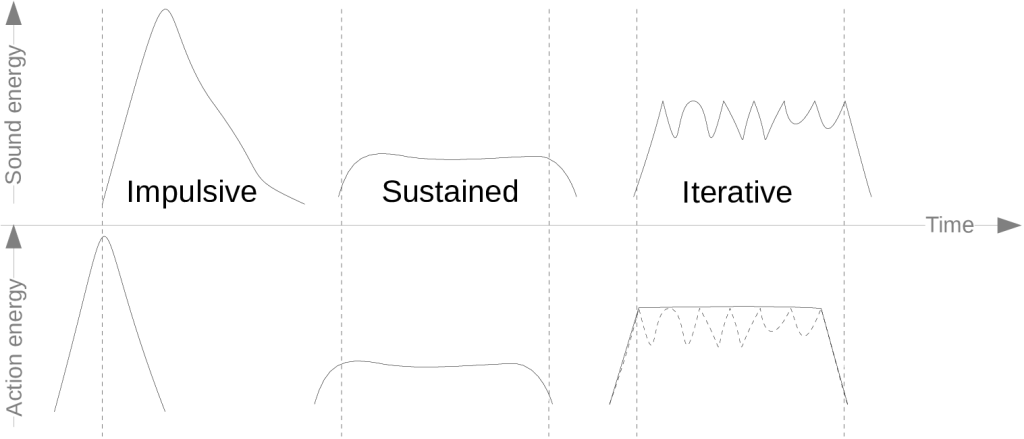One month has passed of the year and my sound action project. I didn’t know how it would develop when I started and have found it both challenging and inspiring. It has also engaged people around me more than I had expected.
Each day I upload one new video recording to YouTube and post a link on Twitter. If you want to look at the whole collection, it is probably better to check out this playlist:
The beauty of everyday sounds
One interesting result from the project so far is that many people have told me that they have started to reflect on sounds in their environment. That was also one of my motivations for the project. We produce sounds, willingly and unwillingly, all the time. Yet, we rarely think about how these sounds actually sound. By isolating and presenting everyday sounds, I help to “frame” them and make people reflect on their sonic qualities.
The project is not only about sound. Equally important are the actions that produce the sounds, what I call sound-producing actions. I aim to show that both the visual and sonic parts of a sound action are important. Watching the action gives a sense of the sound to appear, and listening to the sound can inform about the actions and objects involved.
Recording gear
I didn’t have a thorough plan for recording the sound actions. However, it was clear from the start that I would not aim for studio-quality recordings. The most important has been to make the recordings as simple as possible. That said, I don’t want too much auditory or visual noise in the recordings either. So I try to find quiet locations and frame only the action.
It is said that the best camera is the one you have at hand. In my case, that is my mobile phone (a Samsung S21 Ultra 5G), which sports a quite good mobile phone camera. It can record in 4K, which may be a bit overkill for this project. But, hey, why not… I don’t know exactly how to use all the material later on, but having more pixels to work with will probably come in handy at some point.
The built-in microphones on the phone are not bad but not particularly good either. The phone can record in stereo, and it is possible to switch between the “front” and “back” microphones. Still, both of these settings capture a lot of ambient sounds. That is not ideal for this project, in which I am more interested in directional sound. So I mainly use a Røde VideoMic Me-C for the recordings. The microphone sounds a bit “sharp,” which I guess is because it is targeted at speech recording. Nevertheless, it is small and therefore easy to carry around. So I will probably continue to use it for a while.
Different sound types
I haven’t been very systematic in capturing sound actions so far. Looking at the first 31 recordings shows a nice mix captured at home, in my office, and outside. Many of the sound actions have been proposed by my family, and they have also helped with the recording. Some colleagues have also come up with ideas for new sound actions, so I am sure that I will have enough inspiration to capture 365 recordings by the end of the year.
One challenge has been to isolate single sound actions. But what is actually one sound action? For example, consider today’s recording:
I would argue that this is one action; I move the switch from left to right with one rotating motion. However, due to the steps in the button, the resultant sound has three amplitude spikes. So it can be seen as a sustained action type leading to a series of impulsive sounds. Together, this could probably be considered an iterative sound action type if we were to look at the three main types from Schaeffer’s taxonomy:

My new book discusses sound-producing actions from a theoretical perspective. The nice thing about my current project is that I test the theories in practice. That is easier said than done. It is generally easy to record impulsive sound actions, but the sustained and iterative ones are more challenging. For example, consider the coffee grinding:
The challenge was that I didn’t know how long it should be. Including only one turn wouldn’t give a sense of the quality of the action or the sound. So I decided to make it a little longer. It is too early to start the analysis of the recordings, but I think that more patterns will emerge as I keep going.
Well, one month has passed, 11 more to come. I am looking forward to continuing my exploration into sound actions!
